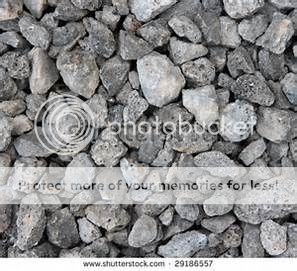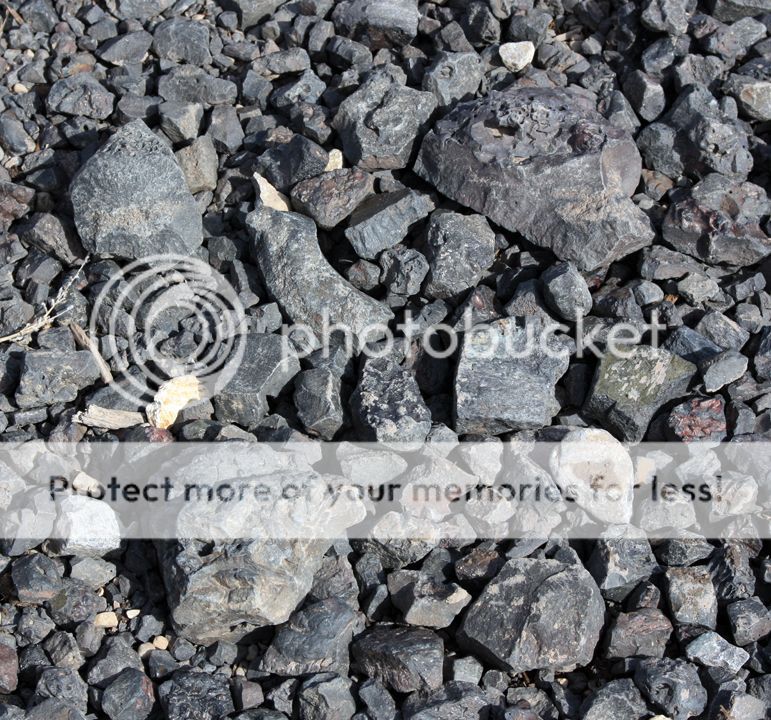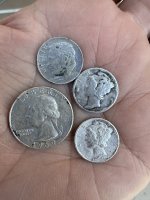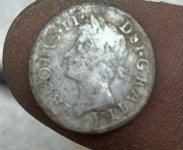sdcfia
Silver Member
- Sep 28, 2014
- 3,654
- 8,869
- Primary Interest:
- Other
[Quotes from two posts]
Those are two very good questions, Oro. One: where are the Spanish mining reports? If one studies mining beyond the Northern Frontier during the Spanish period - a time closely controlled by the Crown and well documented - he finds that there were few contractors who ventured into today's Southwest. These facts are at odds with all the "Spanish mining" rumors that have cluttered the pulp media since the late 19th century. I'm sure there are quite a few unrecorded examples of wildcatters and other free agents who gamed the system in Arizona, but they were primarily looking for placer, not lode deposits.
Two: the newspaper reports get the blood pumping, but like today's media, are factually error-ridden and published primarily as propaganda pieces - especially in the Anglo mining period in the Southwest. I quit on your first example when the Jesuits were credited with more mining conquests in the 1800s. See what I mean? Mix a little history with a lot of fiction and things get mighty cloudy. You would be better served using Mining Journal publications for historical references, but you have to be careful with those too.
So, where did the mines originate that the early Anglos fell into? Without better evidence, all we can do is speculate, and I prefer to guess using logical assumptions. The Anglos began arriving during and particularly following the Civil War. One obvious answer to your question is that the Anglos were finding Franciscan mines, although I'm not sold on this idea. Mexican Independence, for all practical purposes, began ca 1800. That's about 50 years - two generations - of opportunity for Mexican miners to roam unregulated looking for minerals in the Southwest before the US took over the territory. Very little if any of this activity is officially recorded (registrations, permits, etc), although we see evidence of it all over the primary mineral district in southern NM. I imagine the same goes in AZ. The so-called Peralta mines in the Superstitions comes to mind offhand, which are rumored to have been rich and exploited up until the 1840s. To me, it's likely the early Anglos were rediscovering undocumented Mexican workings, some many decades old and erroneously attributed to Jesuits because, well, that's what the newspapers said.
As far as the natives' reports, I don't necessarily accept at face value what prisoners of war tell later masters about their history. Nor do I necessarily rely on interpreters' presentations. I don't reject this stuff out of hand, but it's prudent to be cautious, IMO. As I've stated before, I accept that the Jesuits likely engaged in limited, modest and easy mining in AZ for the purpose of creating church adornments and possibly accumulating pocket money for trade purposes. I don't see any reason to accept the treasure magazine rumors of mondo-rich hidden mines and massive caches from those mines. With proof otherwise, of course, I would change my opinion.
Just another report crediting the Jesuits as the pioneer miners of Arizona. Where are the reports of Spanish miners?
Who or whom were the miners that left the mines in the Santa Ritas and in a few other areas of southern Arizona, if not the people that the Indians said it was and as is reported by the Anglos who re-discovered them?
Those are two very good questions, Oro. One: where are the Spanish mining reports? If one studies mining beyond the Northern Frontier during the Spanish period - a time closely controlled by the Crown and well documented - he finds that there were few contractors who ventured into today's Southwest. These facts are at odds with all the "Spanish mining" rumors that have cluttered the pulp media since the late 19th century. I'm sure there are quite a few unrecorded examples of wildcatters and other free agents who gamed the system in Arizona, but they were primarily looking for placer, not lode deposits.
Two: the newspaper reports get the blood pumping, but like today's media, are factually error-ridden and published primarily as propaganda pieces - especially in the Anglo mining period in the Southwest. I quit on your first example when the Jesuits were credited with more mining conquests in the 1800s. See what I mean? Mix a little history with a lot of fiction and things get mighty cloudy. You would be better served using Mining Journal publications for historical references, but you have to be careful with those too.
So, where did the mines originate that the early Anglos fell into? Without better evidence, all we can do is speculate, and I prefer to guess using logical assumptions. The Anglos began arriving during and particularly following the Civil War. One obvious answer to your question is that the Anglos were finding Franciscan mines, although I'm not sold on this idea. Mexican Independence, for all practical purposes, began ca 1800. That's about 50 years - two generations - of opportunity for Mexican miners to roam unregulated looking for minerals in the Southwest before the US took over the territory. Very little if any of this activity is officially recorded (registrations, permits, etc), although we see evidence of it all over the primary mineral district in southern NM. I imagine the same goes in AZ. The so-called Peralta mines in the Superstitions comes to mind offhand, which are rumored to have been rich and exploited up until the 1840s. To me, it's likely the early Anglos were rediscovering undocumented Mexican workings, some many decades old and erroneously attributed to Jesuits because, well, that's what the newspapers said.
As far as the natives' reports, I don't necessarily accept at face value what prisoners of war tell later masters about their history. Nor do I necessarily rely on interpreters' presentations. I don't reject this stuff out of hand, but it's prudent to be cautious, IMO. As I've stated before, I accept that the Jesuits likely engaged in limited, modest and easy mining in AZ for the purpose of creating church adornments and possibly accumulating pocket money for trade purposes. I don't see any reason to accept the treasure magazine rumors of mondo-rich hidden mines and massive caches from those mines. With proof otherwise, of course, I would change my opinion.







 ) it may be several weeks before I can do so.
) it may be several weeks before I can do so. 





